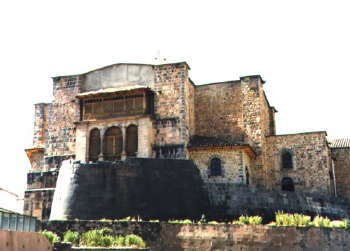The Peruvian Incas
Between 1200 and 1535 AD, the Inca population lived in the part of South America extending from the Equator to the Pacific coast of Chile. The beginning of the Inca rule started with the conquest of the Moche Culture in Peru. The Inca were warriors with a strong and powerful army. Because of the fierceness of their army and their hierarchical organization, they became the largest Native American society. The height of their reign in the 15th century came to a brutal end in 1535 when the Spanish conquistadors took over their territory.
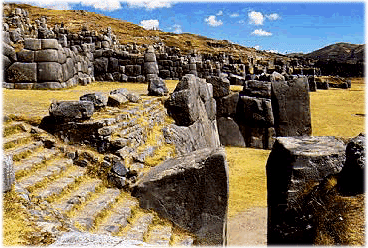
Their cities and fortresses were mostly built on highlands and on the steep slopes of the Andes Mountains. The architecture of the Inca cities still amazes and puzzles most scientists. Stone steps lead up to the top of the cities, which consist of stone houses and religious buildings. The blocks of stones weigh several tons and they are fit together so tightly that not even a razor blade can fit through them. The central city was mainly used for government purposes, while the citizens occupied surrounding areas. Their homes were made from the same stone material and had grass rooftops.
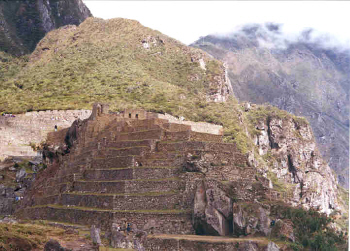
The Inca society was arranged by a strict hierarchical structure. There were many different levels with the Sapa, high priest or ruler, and the army commander at the top. Family members were councilors to the Sapa and even women had authority in the Inca hierarchy. The temple priests, architects and regional army commanders were next. The two lowest classes consisted of artisans, army captains, farmers, and herders. Farmers provided most of the subsistence for the rest of the population. They had to pay tax in the form of gold, which were distributed to the higher classes.
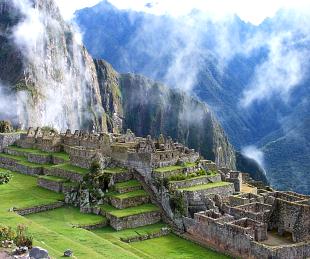
The comprehension of how irrigation can benefit agriculture is evident by the expansion into the highland areas. They developed drainage systems and canals to expand their crop resources. Potatoes, tomatoes, cotton, peanuts and coca were among the many crops grown by the Inca. Llama were used for meat and transportation. There was more than enough resources available for everyone. Increased subsistence levels led to a growth in the Inca population.
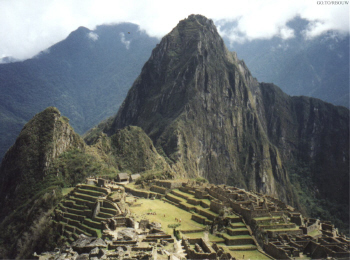
Since population was increasing and the organization of the Inca became stronger, the need for protection became necessary. They built enormous fortresses on top of steep mountains that enabled them to see their enemies and defend themselves. One of the most famous Inca fortresses is Sacasahuman (pictured above), located in Cuzco, the Inca Empire capital. Even though the Inca never had access to the wheel, they built a sophisticated road system to connect the villages. The roads were paved with flat stones and barriers to protect the messengers, or chasqui, from falling down the cliff.
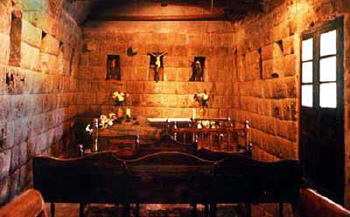
The highest point in an Inca village was reserved for religious purposes. This point was the closest to the sun, which represented their major god, Inti, the Sun God. The six major gods of the Inca represent the moon, sun, earth, thunder/lightning and the sea. Pachamama is the earth god, who is the mother of all humans. The Inca had shamans who believed in animal spirits living on earth. Heaven was depicted by the condor, the underworld by the anaconda, and the brother who resided on earth was the puma. The Sun Temple, located in Machu Picchu, Peru, was a religious calendar that marked the winter and summer solstices.

The Inca were not only fierce conquerors but they also had a violent punishment system. If someone stole, murdered, or had sex with a Sapa wife or a Sun Virgin, they were thrown off a cliff, hands cut off or eyes cut out, or hung up to starve to death. Prisons were of no use because punishment usually consisted of death.Recent excavations of the Inca sites has revealed mummified bodies of the Inca royalty. They have been preserved by ice in the peaks of the Andes mountains.The 40,000 member army of the Inca was destroyed by a 180 member Spanish conquistador army, which was commanded by Francisco Pizarro. The warriors of the Inca were no match for the Spanish guns. By 1535, the Inca society was completely overthrown.
